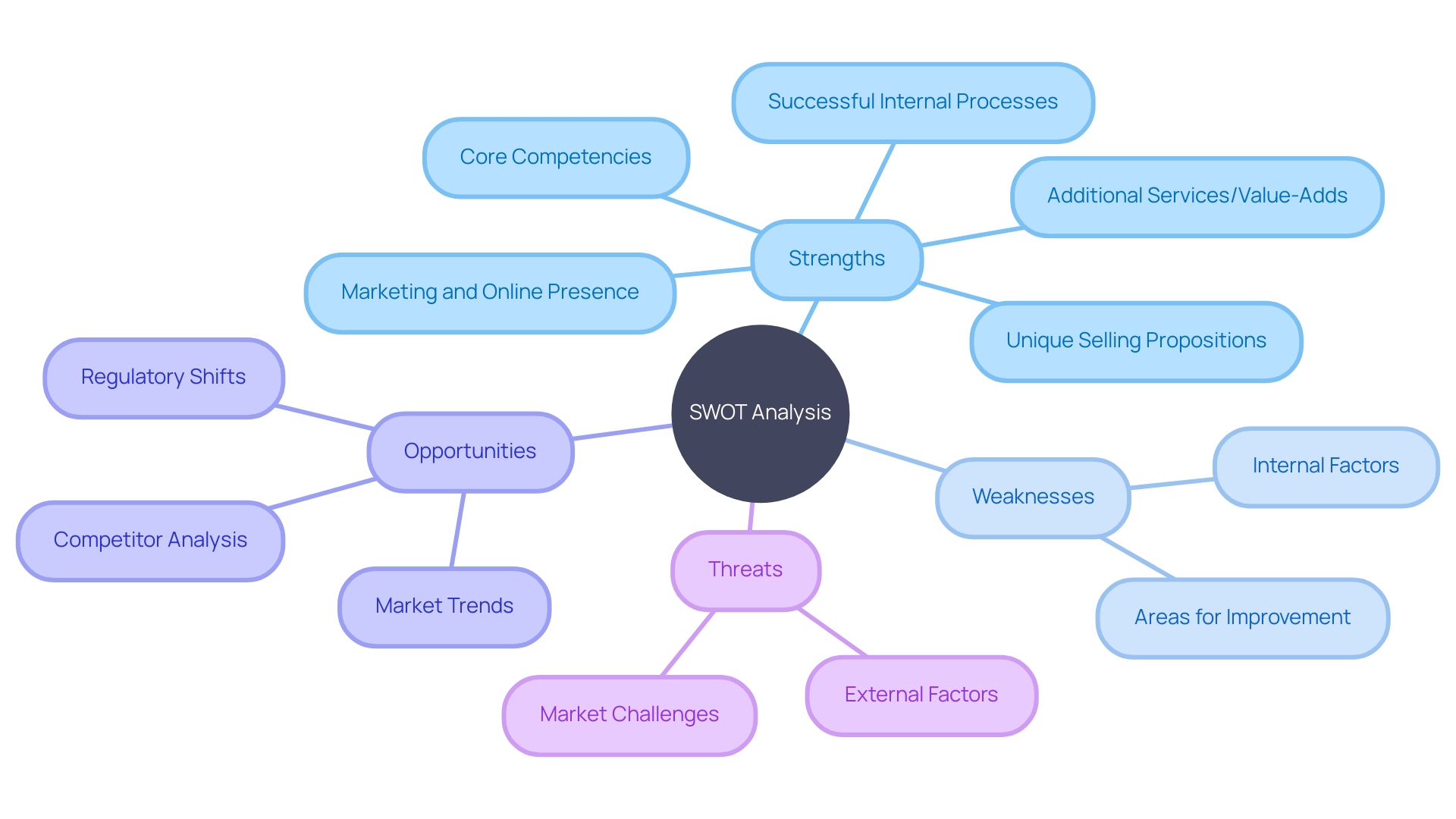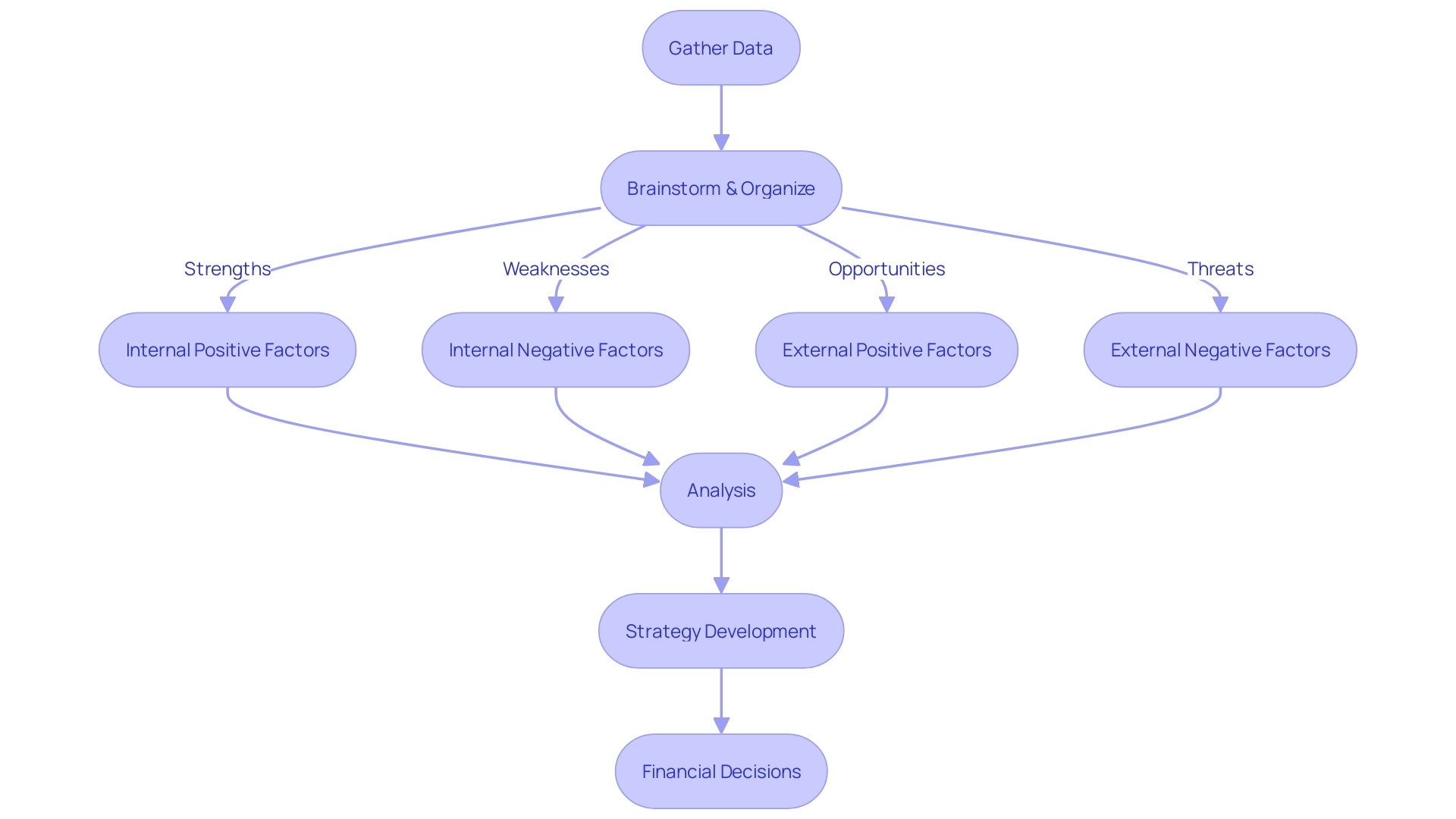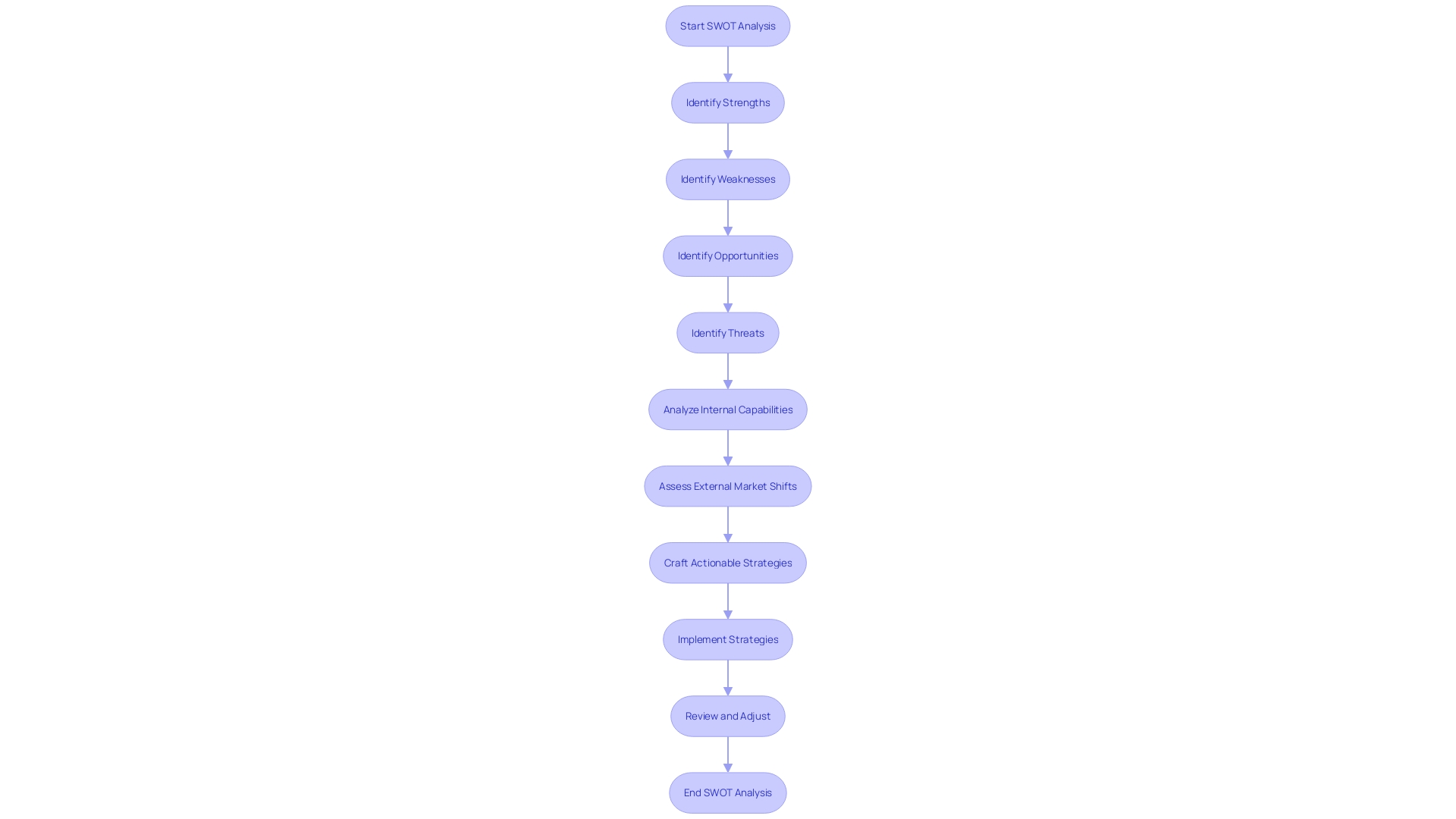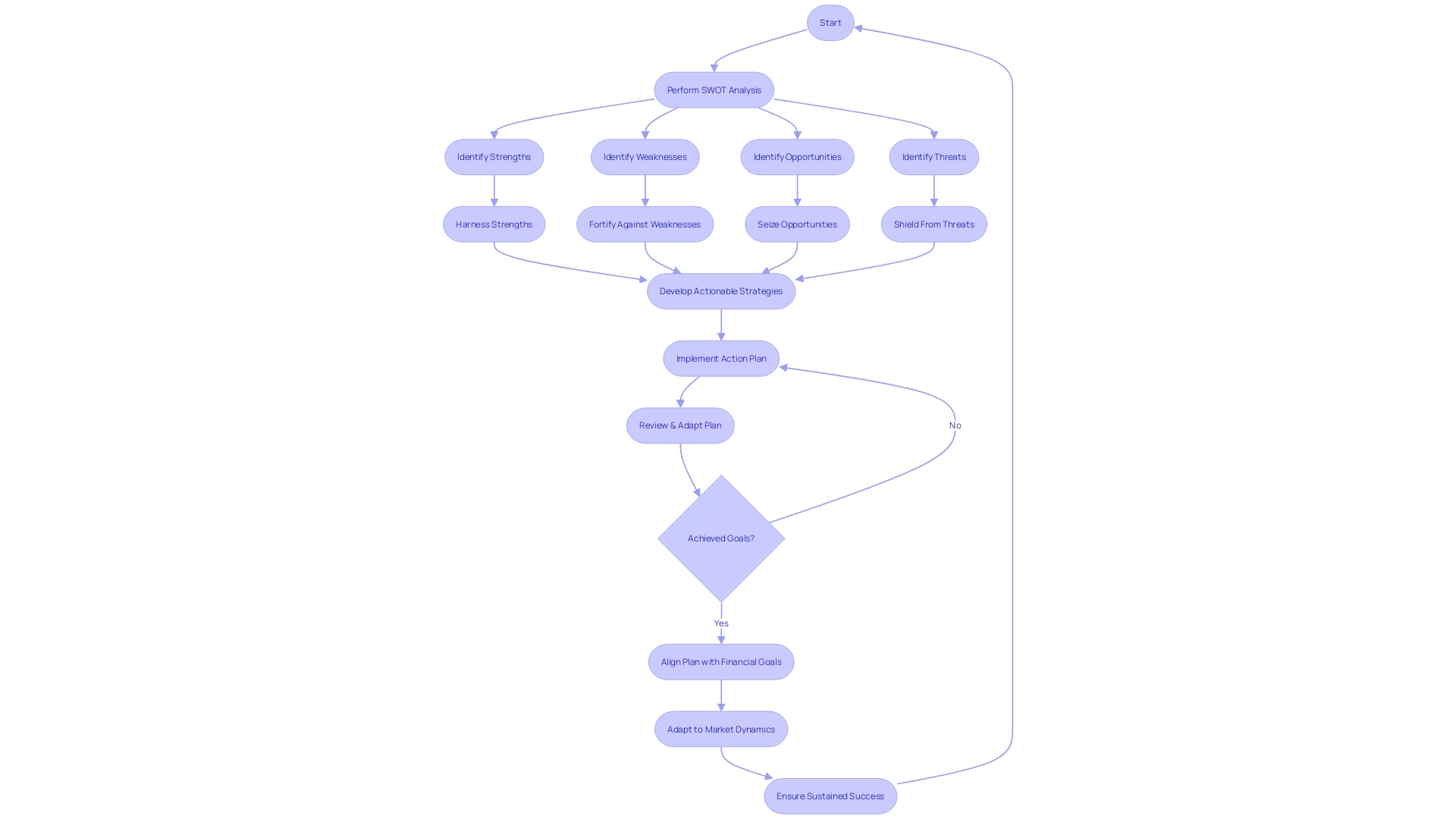Introduction
A SWOT analysis is a powerful tool that allows businesses to assess their internal strengths and weaknesses, as well as the external opportunities and threats they face. By conducting a comprehensive analysis, organizations can gain valuable insights that inform strategic decision-making and help them navigate the ever-changing business landscape.
In this article, we will explore the importance of SWOT analysis, how to conduct one effectively, and provide examples of its practical application. Whether you're a CFO looking to optimize your company's performance or a business professional seeking to gain a competitive edge, this article will provide you with the knowledge and tools you need to leverage the power of SWOT analysis.
Understanding the SWOT Framework
A SWOT analysis is an essential strategic tool that allows businesses to dissect their internal dynamics and the external market environment. It's a framework for identifying an organization's strengths, such as competitive advantages, strong supplier relations, and a robust online presence.
It also sheds light on weaknesses that need addressing, which could include financial constraints or gaps in the market. By analyzing opportunities, a company can explore potential markets or technological advancements that could be exploited.
Conversely, recognizing threats is crucial, including economic downturns or regulatory changes that could negatively impact operations. This analysis not only aids in strategic planning but also serves as a foundation for crafting actionable strategies tailored to leverage strengths and counteract weaknesses. The insights gained from a SWOT analysis enable organizations to navigate their industry with informed decisions and a clear direction, ultimately guiding them towards their desired future state. To ensure a comprehensive view, it's vital to conduct a competitive analysis, understanding both your and your competitors' internal factors, to maintain a competitive edge.

Conducting a SWOT Analysis
Embarking on a SWOT analysis necessitates a thorough examination of an organization's inherent strengths and weaknesses, as well as the external opportunities and threats that could influence its trajectory. It's an instrumental framework for strategic planning, enabling businesses to pinpoint their unique selling propositions and core competencies.
By identifying what sets them apart in the industry—such as superior supplier relationships, a dominant market presence, or an innovative online strategy—companies can leverage their strengths to their advantage. Concurrently, understanding the external landscape is vital.
This includes staying abreast of market trends, evaluating competitors' strengths and weaknesses, and being cognizant of regulatory shifts. A well-executed SWOT analysis not only helps an organization understand its current standing but also informs future strategies. It's about capitalizing on what you do best and mitigating the areas where you're vulnerable, all while maintaining a keen eye on the external factors that could shape your business environment. The goal is to use this analysis to forge strategies that bolster your organization's strengths, address its weaknesses, and navigate the opportunities and threats presented by the market.

Examples of SWOT Analysis
Delving into the practical application of SWOT analysis illuminates its critical role in strategic decision-making. For instance, businesses leverage SWOT to pinpoint their unique advantages, such as robust supplier relationships, market dominance, or a dynamic online presence.
By asking incisive questions about internal processes that thrive—like marketing prowess or value-added services—companies can compile a comprehensive list of strengths. These strengths are not only positive attributes but also controllable elements that can be harnessed to stand out in the industry.
Accompanying the recognition of strengths is the imperative to conduct competitive analysis, which offers insights into the strengths and weaknesses of industry rivals. This analysis aids in crafting informed strategies that capitalize on a company's strengths while managing its weaknesses and responding adeptly to the business environment.
A SWOT analysis isn't complete without considering external factors such as market conditions, technological shifts, and socio-cultural changes. These elements, while beyond direct control, can significantly impact a business, presenting both opportunities and threats.
As one expert puts it, "SWOT analysis is a strategic planning tool that helps organizations identify helpful and harmful factors, both internal and external to their operations." This underscores the importance of SWOT in navigating the market context and adapting to it for sustained success. To execute a SWOT analysis, begin with data gathering to understand internal and external factors. Then, brainstorm to categorize this data into strengths, weaknesses, opportunities, and threats. This structured approach provides clarity and makes the process manageable, ultimately informing financial decisions such as resource allocation for R&D, marketing, or infrastructure enhancements.

Marketing Agency SWOT Analysis Example
A marketing agency's SWOT analysis revealed their proficient team and robust client relations as key strengths, while pinpointing a gap in digital marketing expertise as a weakness. The agency spotted an opportunity in the burgeoning social media marketing demand.
However, they also recognized the looming threat of intensified competition. To conduct this analysis, the agency first collected pertinent internal and external data, including financial reports and customer feedback, which highlighted industry trends.
With this data, they were able to brainstorm and categorize their strengths, such as effective internal processes like market dominance and a comprehensive online presence, and weaknesses that required attention. This strategic planning tool not only helped the agency understand its market position but also facilitated crafting strategies to leverage strengths and address weaknesses, considering the external factors of opportunities and threats. Additionally, given the explosive growth in social media users, now totaling 5.04 billion globally, and the transformative evolution of internet infrastructure, the agency's focus on social media marketing services is well-justified. Marketers are recognizing the career potential within social media, with its ability to propel brand success and garner professional respect in the industry.
Using SWOT Analysis for Decision Making
Deploying a SWOT analysis transcends mere theory; it is a dynamic tool shaping decision-making. By pinpointing strengths, weaknesses, opportunities, and threats, organizations can forge actionable strategies tailored to their unique market standings. This structured approach facilitates a deep dive into internal capabilities, such as standout industry features, technological prowess, or robust financial health, as well as external market shifts influenced by socio-cultural, economic, or technological factors.
A well-executed SWOT analysis enables businesses to harness their core competencies, effectively navigate market dynamics, and address internal shortcomings, thereby crafting a competitive edge. For instance, by optimizing sales pathways and enhancing customer experiences, a company can fortify its market position and drive sustainable growth. The strategic insights gleaned from SWOT empower businesses to not only anticipate but also adeptly respond to the ever-evolving business landscape.

Creating a Competitive Advantage
A SWOT analysis serves as a foundational tool in strategic planning, enabling businesses to dissect their internal and external environments. It stands for strengths, weaknesses, opportunities, and threats.
The analysis begins with a thorough examination of the internal processes that a company excels in, such as robust supplier relations, market advantages, dynamic marketing, and a strong online presence. These strengths are pivotal assets that businesses can harness to create a distinct competitive edge.
By analyzing financial statements, customer feedback, and industry trends, organizations can brainstorm and categorize these elements, thereby identifying areas that require strategic investment, like R&D or marketing initiatives. Furthermore, a SWOT analysis illuminates external factors like market conditions and regulatory changes, which, although beyond direct control, can significantly influence business strategy. Recognizing these factors is crucial for businesses to proactively adapt and maintain market leadership. Ultimately, the insights garnered from a SWOT analysis equip businesses with the knowledge to craft strategies that amplify their strengths, mitigate weaknesses, and seize opportunities while guarding against potential threats.
Implementing SWOT Analysis Results
A SWOT analysis, standing for strengths, weaknesses, opportunities, and threats, is an invaluable strategic planning tool. To maximize its efficacy, it is crucial to transform the insights it provides into an actionable plan.
This plan must delineate clear strategies to harness your company's strengths—like superior supplier relationships, market advantages, or a robust marketing presence—and to fortify against weaknesses. It should also outline proactive measures to seize market opportunities and to shield the company from potential external threats, such as economic shifts or technological changes.
A thorough competitive analysis is imperative to gauge the strengths and weaknesses in relation to your industry rivals. Moreover, the action plan is not static; it requires ongoing scrutiny and adaptation to remain aligned with financial goals and market dynamics. By regularly revisiting and refining this plan, your business can maintain a dynamic and responsive approach to both internal and external factors, ensuring sustained success in a competitive marketplace.

Conclusion
In conclusion, a SWOT analysis is a powerful tool that allows businesses to gain valuable insights into their internal strengths and weaknesses, as well as the external opportunities and threats they face. By conducting a comprehensive analysis, organizations can make informed strategic decisions and navigate the ever-changing business landscape. To conduct an effective SWOT analysis, it is important to thoroughly examine internal factors such as competitive advantages, supplier relations, and online presence.
Additionally, understanding the external environment by staying updated on market trends and evaluating competitors' strengths and weaknesses is crucial. Practical examples demonstrate how businesses leverage SWOT analysis to identify their unique advantages and address weaknesses. This analysis also helps organizations navigate external factors like market conditions and technological shifts.
Deploying a SWOT analysis goes beyond theory; it shapes decision-making by enabling companies to forge actionable strategies tailored to their market standings. By leveraging strengths, addressing weaknesses, and navigating market dynamics, businesses can create a competitive edge and drive sustainable growth. To implement SWOT analysis results effectively, it is essential to transform insights into an actionable plan.
This plan should outline clear strategies to capitalize on strengths, mitigate weaknesses, seize opportunities, and protect against threats. Regularly revisiting and refining the action plan ensures ongoing alignment with financial goals and market dynamics. By leveraging the power of SWOT analysis, CFOs and business professionals can optimize performance, gain a competitive edge, and navigate the ever-changing business landscape with confidence.
Unlock the power of SWOT analysis and gain a competitive edge for your business today!




